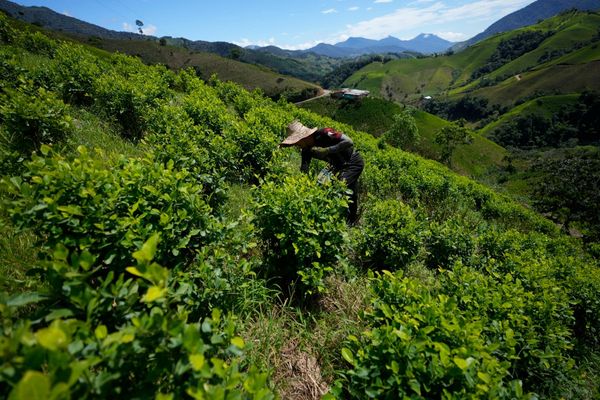
It began with a conversation with two former crown prosecutors. These lawyers, in their 50s, had spent a large part of their careers prosecuting those charged with crimes, many of them allegations of sexual assault and rape.
We were discussing a submission from a victim-survivor who wrote anonymously for Guardian Australia about her own experience with the criminal court system after coming forward about sexual assault some three decades after it happened. Her story eloquently laid out the further traumatisation she experienced as she travelled through the court system, feeling that all the cards were stacked against her.
After talking about the complexities of the law there was a simple counterpoint question: would you recommend that someone you love report a rape or sexual assault and seek justice in the criminal courts?
The answers were brutally swift. You can guess what they said.
When people who have devoted so much to fighting for victims of crime in the court system say, no, I would not recommend anyone I love who has been sexually assaulted pursue justice for this crime through this institution, what does it say?
Most victim-survivors will have their quest for justice extinguished at many different junctures in the process. When they go to the police and are told, you probably can’t win this, it’s your word against his, and he doesn’t even have to say anything. When they are told their case won’t be committed for trial because despite the clear CCTV evidence there are too many inconsistencies in their accounts of what happened. When they sit in court and have their credibility destroyed by defence counsel asking repeatedly about sexual history despite directions that say they should not. When the jury, made up of 12 citizens who reflect the attitudes of our wider society, just doesn’t believe her. There are so many ways in which our justice system does not protect women; it’s estimated less than 2% of sexual assault cases result in conviction.
As one reform advocate told the Guardian, rape has effectively been decriminalised. Another we spoke to maintains it’s one of the easiest violent crimes to get away with. Men who rape and assault women are not being held to account.
And in the process of seeking justice many women – for they are mostly women – experience a secondary trauma. Not for nothing are rape trials often called the second rape.
In her book Credible: Why we doubt accusers and protect abusers, the former New York prosecutor and legal expert Deborah Tuerkheimer writes of what is clearly a global issue: “Most women who bring forward allegations of misconduct must walk through the fire: they will be distrusted, blamed, treated with indifference, or far worse. In all likelihood, they will be harmed again, this time by the people they trusted to help them.”
The reasons for this are complex and numerous and baked into a system not known for its dynamism. So what are the obstacles to reform? Why is this issue so fraught and intractable?
We have launched a series that asks these and other questions about justice responses to sexual violence. Why are rape myths – those unkillable zombie tropes we have been discussing ad nauseam for years – still being weaponised in courts of law? Why, when we know the neuroscience of trauma memory, does the myth that all memories must be perfectly coherent and linear still persist? Are there alternatives to criminal justice? What does justice mean for victim-survivors?
And why wouldn’t you recommend a loved one seek justice?
These are questions to ask in light of a reckoning with gendered violence. Eight years after #MeToo, four years after the groundswell moment that saw women around Australia rise up and march against violence, the attorney general, Mark Dreyfus, is soon to table a report after a year-long review of justice responses to sexual violence. More than 200 submissions have been made, many of them calling for widespread reform and a trauma-informed approach to justice.
You may remember the words “trauma-informed” from last year’s judgment in the defamation case brought by Bruce Lehrmann against the Network Ten and journalist Lisa Wilkinson after The Project broadcast an interview with Brittany Higgins in which she alleged she was raped by Lehrmann, a charge he has always vehemently denied. In the civil case Justice Michael Lee found that Lehrmann had not been defamed (a decision Lehrmann is appealing).
Having found that “on the balance of probabilities” Lehrmann did rape Brittany Higgins, Lee went on to say the inconsistencies in her accounts – so often the trigger for women having their credibility destroyed in the courtroom – were not inconsistent with the conduct of a genuine victim of sexual assault.
Lee was widely praised for his trauma-informed judgment as a kind of breakthrough moment, but actually he was merely stepping over the low bar of what should be common knowledge and common practice.
Still it is not. Meanwhile, in New South Wales legal circles, there is a live argument about “weak and meritless” sexual assault cases making it to court. One district court judge said that cases were being prosecuted “without apparent regard to whether there might be reasonable prospects of securing a conviction”. In response, the director of public prosecutions, Sally Dowling SC, conducted an internal audit of more than 330 cases. Only 15 were dropped. The rest were deemed worth pursuing.
It’s true there really aren’t many reasonable prospects for conviction in sexual assault but where the real problem lies – and what the possible solutions are – is part of this discussion.
Justice responses to sexual violence is a massive subject, and a seemingly impossible knot to unravel completely. So we have put some boundaries around this series – we are looking at adult sexual violence only, and throughout the series we talk about women as victim-survivors and men as perpetrators, because sexual violence is gendered violence.
We have also confined it specifically to what happens within the criminal court system, which is important to note because the least powerful in our society – First Nations women – rarely even make it to court in matters of sexual violence. According to Djirra, the Aboriginal Family Violence Legal Service, the literature shows that an estimated 90% of violence against First Nations women goes unreported. When they do report, they face further harms. Migrant women and other marginalised groups are similarly disadvantaged.
One of the stated aims of the Australian Law Reform Commission review is to “harmonise and strengthen sexual assault and consent laws”. The other is “to improve outcomes and experiences for victim-survivors in the justice system”.
I hope they will read the stories of the victim-survivors who have recounted for us difficult stories about what happened to them in the courtroom. These are women who have walked through the fire.
Lucy Clark is associate editor of Guardian Australia
• Information and support for anyone affected by rape or sexual abuse issues is available from the following organisations. In Australia, support is available at 1800Respect (1800 737 732). In the UK, Rape Crisis offers support on 0808 500 2222. In the US, Rainn offers support on 800-656-4673. Other international helplines can be found at ibiblio.org/rcip/internl.html







